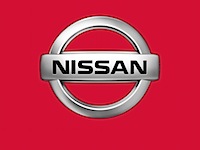Hewlett-Packard. Starbucks. Best Buy. Research in Motion (Blackberry). RadioShack. And, most recently, JC Penney. Hardly a week goes by without a report that one well-known company or another is in the throes of a turnaround.
Each period of business history has its own representative corporate type. The 1960s were the age of the conglomerate. In more recent decades, the startup has achieved iconic status. But the kind of organization that marks our own historical moment is, arguably, the turnaround company. In almost every sector, there are once-dominant enterprises that find themselves on the wrong side of a shift in customer demand or the emergence of a disruptive technology.
So what does it take for a leader to pull a company out of the doldrums, or indeed out of real or potential bankruptcy? It starts, no doubt, with a sense of urgency. In that respect, a turnaround effort differs from a standard organizational change initiative. Change happens slowly—whereas, in a turnaround situation, time is of the essence. A company that’s going in the wrong direction needs to change, and change fast, or soon it will be past the point of no return. Decide, act, decide, act: That must be the order of the day.
Or so it might seem, anyway. In fact, while the need for speed is undeniable, effective turnaround leaders also keenly appreciate the need to stop—to stop and talk with the people in their company who must do the day-to-day work of moving the organization in a new direction. Such leaders understand that a push to undertake a new strategy or to redirect operational performance depends pivotally on how well they communicate with employees. Equally important, it depends on how well they manage communication throughout their organization.
 Consider the example of Starbucks. In 2008, the coffee chain was struggling to maintain its market position and to ward off a growing set of competitive threats. So Howard Schultz, the company’s founder, retook the reins as its CEO and launched a drive to revitalize its operations from the ground up. As reports on that effort demonstrate, Schultz placed communication at the center of his turnaround strategy.
Consider the example of Starbucks. In 2008, the coffee chain was struggling to maintain its market position and to ward off a growing set of competitive threats. So Howard Schultz, the company’s founder, retook the reins as its CEO and launched a drive to revitalize its operations from the ground up. As reports on that effort demonstrate, Schultz placed communication at the center of his turnaround strategy.
“Schultz’[s] capacity for hands-on communication is impressive,” one writer observes. “He blitzed each core constituency—senior managers, store managers, customers, media, analysts, shareholders, and employees—with various communications concisely presenting the case for change or a particular decision.” Another commenter, drawing upon a published interview with Schultz (subscription required), highlights several principles and practices that Schultz has sought to pursue: “Share the Vision.” “Clearly Lay Out the Plan.” “Let Employees Know How They Can Help.” “Foster Two-Way Communication.”
Yet a focus on enhancing communication isn’t enough. It has to be communication of the right sort. In normal times, leaders can allow ideas and information to move across their organization in a deliberate, structured, layer-by-layer fashion. In a turnaround scenario, however, leaders must do whatever they can to make that process nimbler and smoother—more dynamic and more immediate. “Corporate communication,” as businesspeople have traditionally understood and practiced it, must give way to organizational conversation.
That’s our term for an approach to managing communication that draws upon the immediacy of personal conversation. Our model of organizational conversation features four distinct elements: intimacy, interactivity, inclusion, and intentionality. Here, in the spirit of that model, we present four steps toward powering a turnaround project through conversation. For each step, we’ll cite an example from the case history of notable turnaround efforts.
Talk straight. Conversational intimacy involves efforts by leaders to create and maintain a close connection with employees at every level of their company. And it requires leaders to be honest and authentic, especially when it comes to sharing bad news or addressing difficult topics.
 In 2000, when Anne Mulcahy took charge of operations at Xerox, there were plenty of difficult topics to confront. Xerox was deeply in debt, its stock was plummeting, and its core business model showed every sign of being unsustainable. In that role and at that moment, Mulcahy focused on getting out into the field and talking with people. A study of her tenure during this period quotes a colleague of hers as follows: “Anne appealed to employees with missionary zeal, in person and through videos.” According to the study, Mulcahy herself said, “I’m never happier than when I’m milling around with a group of Xerox people, in a town hall meeting, or a Q&A. I don’t like giving speeches, but I love dialogue.”
In 2000, when Anne Mulcahy took charge of operations at Xerox, there were plenty of difficult topics to confront. Xerox was deeply in debt, its stock was plummeting, and its core business model showed every sign of being unsustainable. In that role and at that moment, Mulcahy focused on getting out into the field and talking with people. A study of her tenure during this period quotes a colleague of hers as follows: “Anne appealed to employees with missionary zeal, in person and through videos.” According to the study, Mulcahy herself said, “I’m never happier than when I’m milling around with a group of Xerox people, in a town hall meeting, or a Q&A. I don’t like giving speeches, but I love dialogue.”
It wasn’t all happy talk—far from it. In talking to fellow top executives, in particular, Mulcahy was blunt about reckoning with points of potential conflict. “I knew there would be people who certainly wouldn’t be supportive of me,” she recalled. “So I confronted a couple of them and said, ‘Hey, no games. Let’s just talk.’” She also put forth a more general rule: “When there are tough messages to deliver, it’s important to communicate the good and the bad. Respect people by delivering the truth.”
Make talk happen. When a company enters a turnaround crisis, it’s often in part because people in the organization have lost the ability to interact with each other. So conversationally adept leaders find ways to promote interactivity. They deploy communication channels that allow for back-and-forth discussion, and they build a culture that fosters that kind of discussion.
 That’s what Carlos Ghosn did after he became president and CEO of Nissan in 1999. The Japanese automaker had seen its performance deteriorate over the preceding decade, and a shake-up was clearly in order. Among the first items that Ghosn changed was a protocol that had been in place for meetings of top executives. In a study of Ghosn’s turnaround leadership, a fellow executive offered this observation: “In old Nissan, there was hardly any discussion in most senior management meetings. … Today our meetings are different. We actually debate issues. We openly disagree with one another. It took some time for all of us to get used to it, but our meetings are much more productive.”
That’s what Carlos Ghosn did after he became president and CEO of Nissan in 1999. The Japanese automaker had seen its performance deteriorate over the preceding decade, and a shake-up was clearly in order. Among the first items that Ghosn changed was a protocol that had been in place for meetings of top executives. In a study of Ghosn’s turnaround leadership, a fellow executive offered this observation: “In old Nissan, there was hardly any discussion in most senior management meetings. … Today our meetings are different. We actually debate issues. We openly disagree with one another. It took some time for all of us to get used to it, but our meetings are much more productive.”
Ghosn also initiated practices that enabled greater interactivity throughout Nissan. Instead of relying on memos—or on middle managers—to convey his message, he used a companywide video hookup to present his transformation plan to employees. “This was the first time in the company’s history that the president spoke directly to everyone in the organization,” one Nissan executive explained.
Let everyone talk. Conversation inclusion exists where leaders adopt measures that enable employees to participate fully in the communication process. By including people at all levels of a company in the organizational conversation, leaders can achieve a more intense quality of engagement among those who must carry out a turnaround project.
 HCL Technologies wasn’t at a point of crisis in 2005, when Vineet Nayar took on the role of president, but right away Nayar saw the need to initiate a major transformation effort. The company needed to move up the value chain in the technology services industry, and making that shift would require HCL employees to change how they related to each other—and to the company. Toward that end, Nayar and his team launched a internal communication initiative that featured the tagline “Employees First, Customers Second” (EFCS). Nayar, in a study of his early push to transform HCL, explained the EFCS theme: “The idea behind Employee First was that as a services business, the employee interface with the customer was critical. … I wanted value-focused employees who were willing and able to drive an innovative, sophisticated experience for customers.”
HCL Technologies wasn’t at a point of crisis in 2005, when Vineet Nayar took on the role of president, but right away Nayar saw the need to initiate a major transformation effort. The company needed to move up the value chain in the technology services industry, and making that shift would require HCL employees to change how they related to each other—and to the company. Toward that end, Nayar and his team launched a internal communication initiative that featured the tagline “Employees First, Customers Second” (EFCS). Nayar, in a study of his early push to transform HCL, explained the EFCS theme: “The idea behind Employee First was that as a services business, the employee interface with the customer was critical. … I wanted value-focused employees who were willing and able to drive an innovative, sophisticated experience for customers.”
Elements of the EFCS project included the launch of a new, “employee-friendly” intranet portal and the creation of an intranet-based service called U&I, which empowered employees to engage directly with Nayar. “Communications at HCL used to be handed down from up high,” a senior manager at HCL noted. “Vineet replaced that with lots of direct contact through video conferencing, online tools, and face-to-face talks.”
Talk strategy—and talk strategically. Only when leaders approach communication with intentionality can they ensure that smart talk will result in sustained action. By carefully building communication efforts around a clear organizational vision, and by taking care to follow an overarching strategy for those efforts, a leader can pursue a turnaround conversation that will keep a company on message and on track.
 Consider the turnaround push that Jan Carlzon undertook at Scandinavian Airlines Systems (SAS) in the early and mid-1980s. To improve the company’s ability to attract business customers, Carlzon aimed to improve the level of service that frontline employees could offer. The best way to do so, he concluded, was to empower those employees—to give them greater autonomy and flexibility in how they did their job. Yet they could exercise that autonomy fruitfully only if SAS leaders also gave them a big-picture sense of what the company was aiming to achieve. Carlzon, in a study of his early work as CEO, put it this way: “Anyone who is not given information cannot assume responsibility. But anyone who is given information cannot avoid assuming [responsibility].”
Consider the turnaround push that Jan Carlzon undertook at Scandinavian Airlines Systems (SAS) in the early and mid-1980s. To improve the company’s ability to attract business customers, Carlzon aimed to improve the level of service that frontline employees could offer. The best way to do so, he concluded, was to empower those employees—to give them greater autonomy and flexibility in how they did their job. Yet they could exercise that autonomy fruitfully only if SAS leaders also gave them a big-picture sense of what the company was aiming to achieve. Carlzon, in a study of his early work as CEO, put it this way: “Anyone who is not given information cannot assume responsibility. But anyone who is given information cannot avoid assuming [responsibility].”
According to that study, Carlzon and his team went so far as to create a booklet for employees that used cartoon imagery—a smiling airplane, for example—and “simple, direct language” to tell “the story of the company to date.” Employees came to call it “the little red book,” and it exemplified Carlzon’s theory of turnaround communication: “Rather than merely issuing your message, you have to be certain that every employee has truly understood and absorbed it.”
[Cross-posted, in a slightly different form, at the Harvard Business Review Web site.]
















